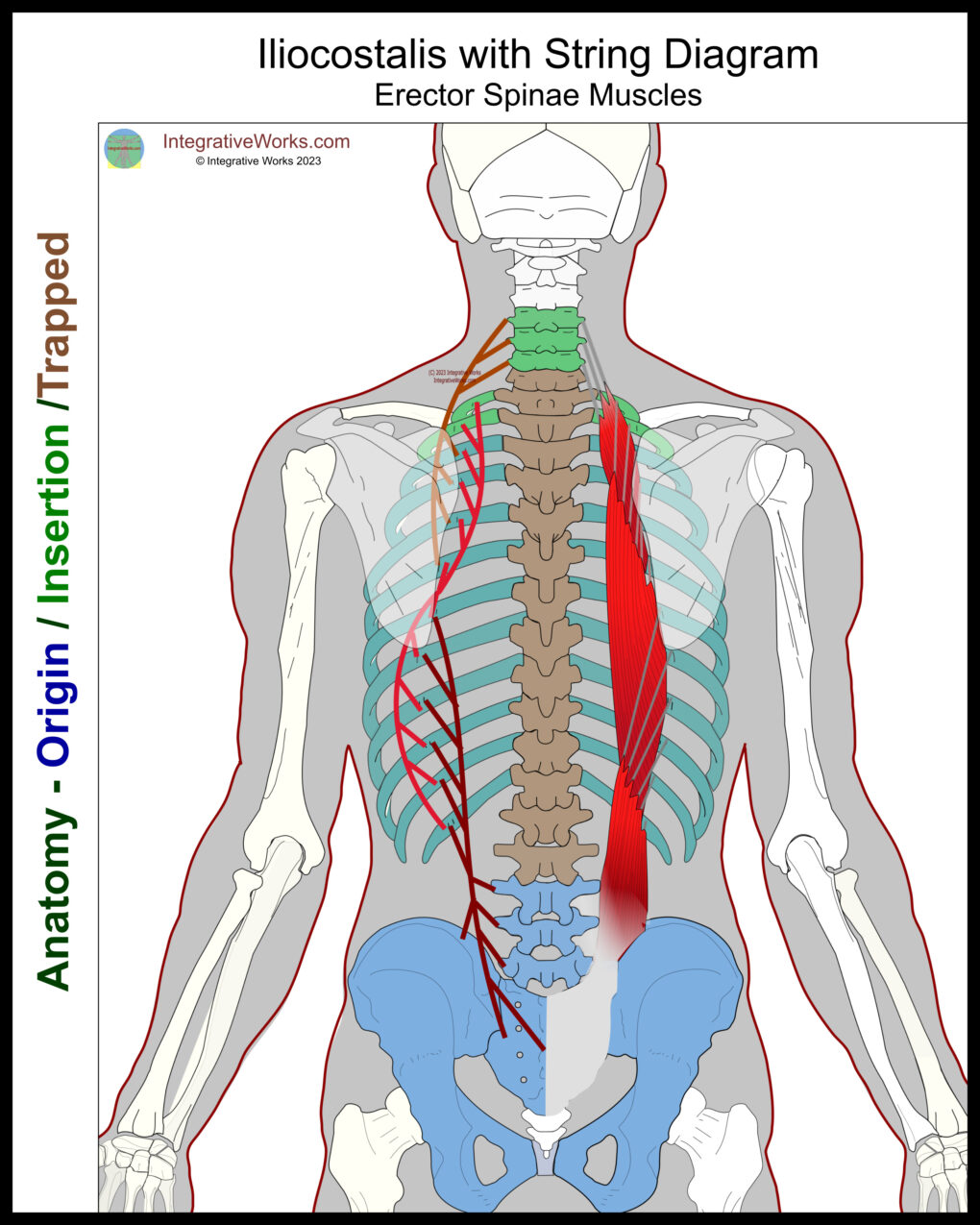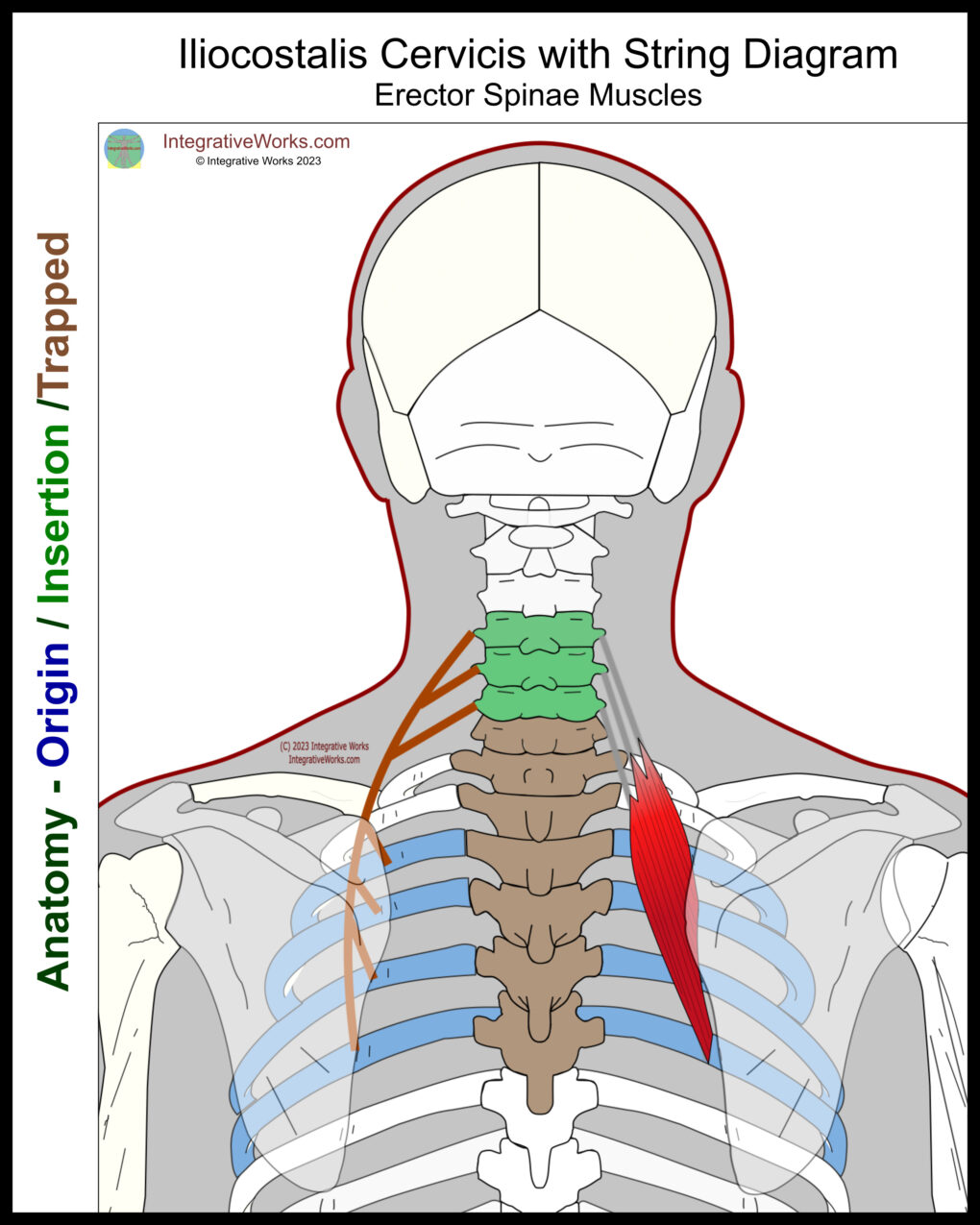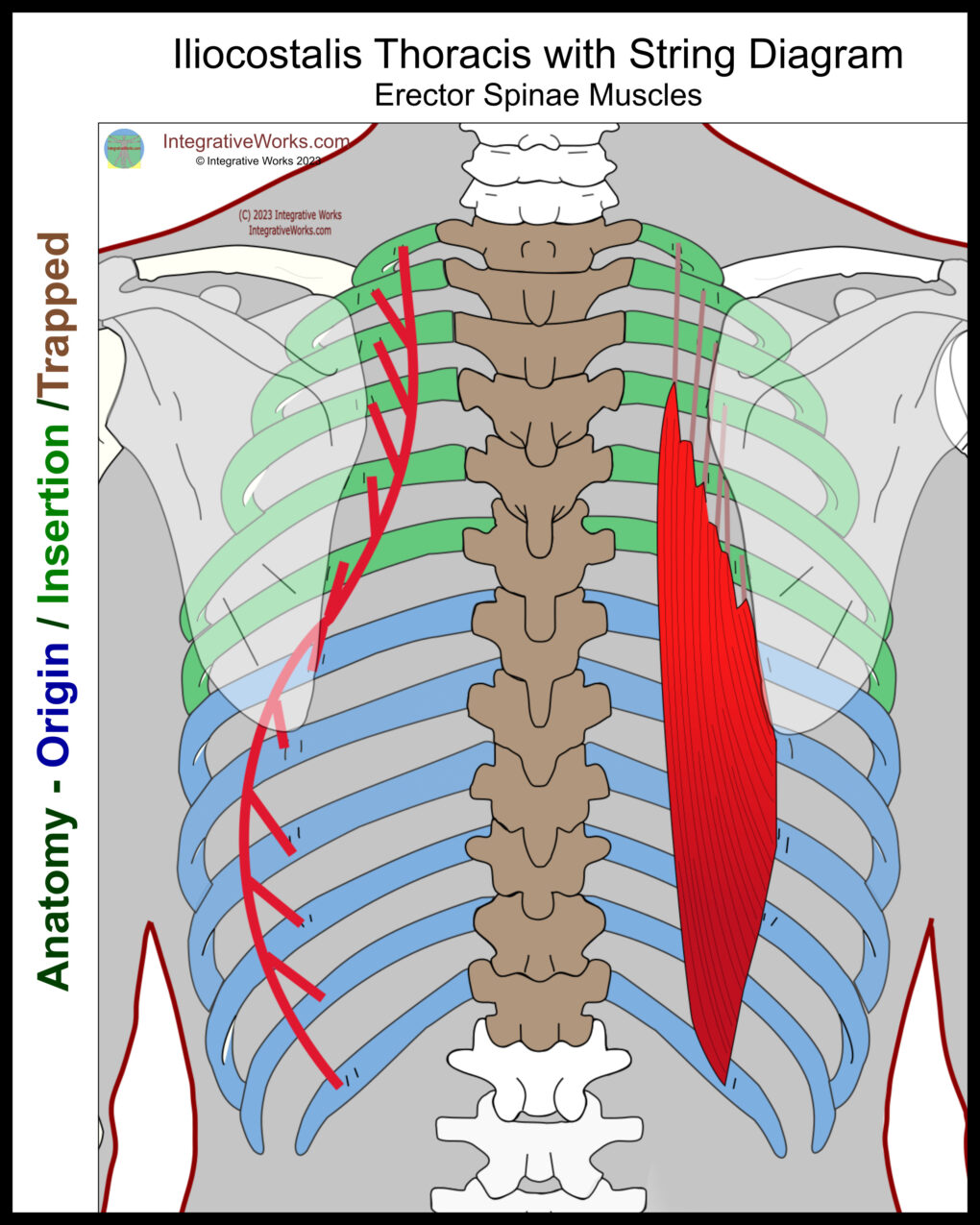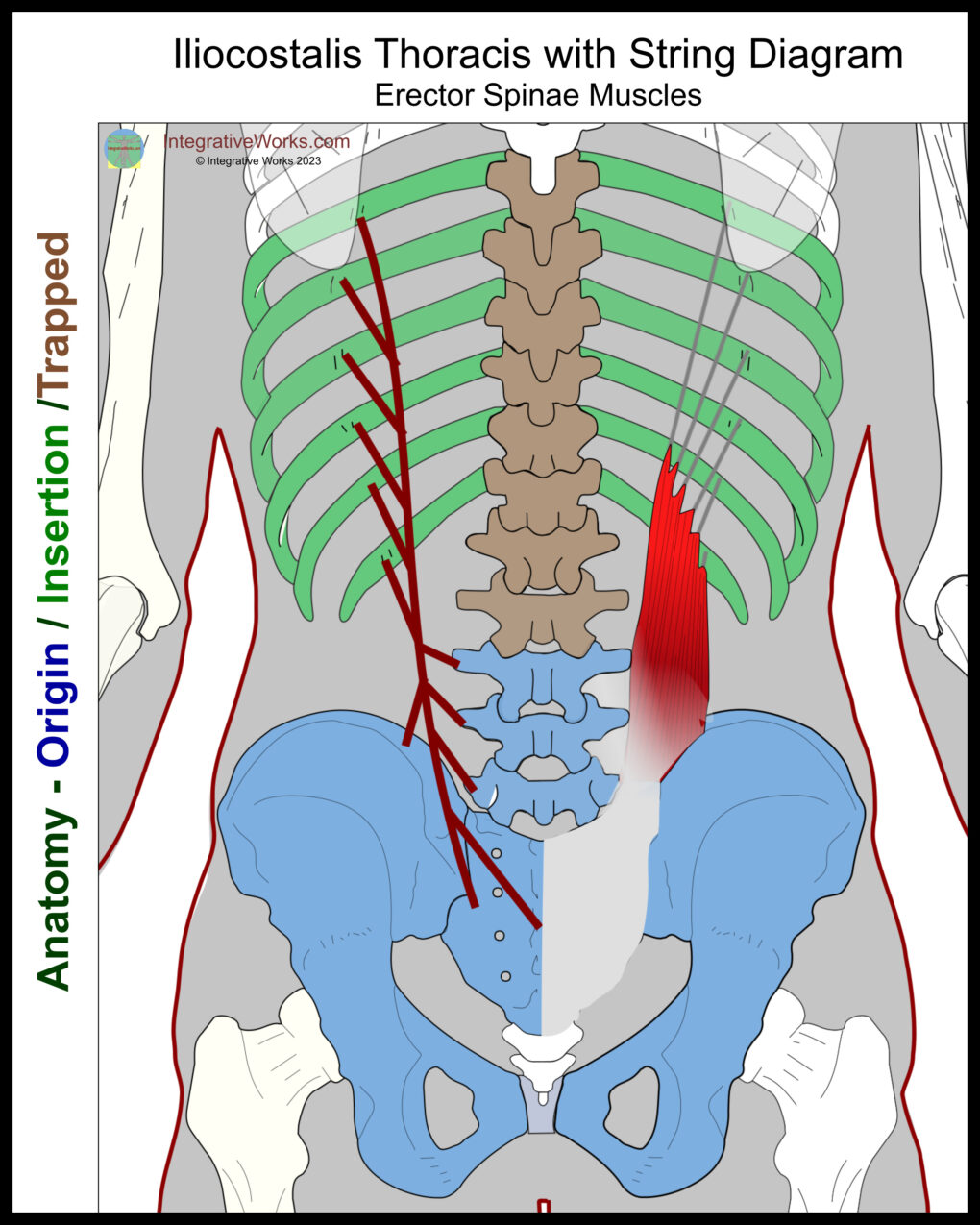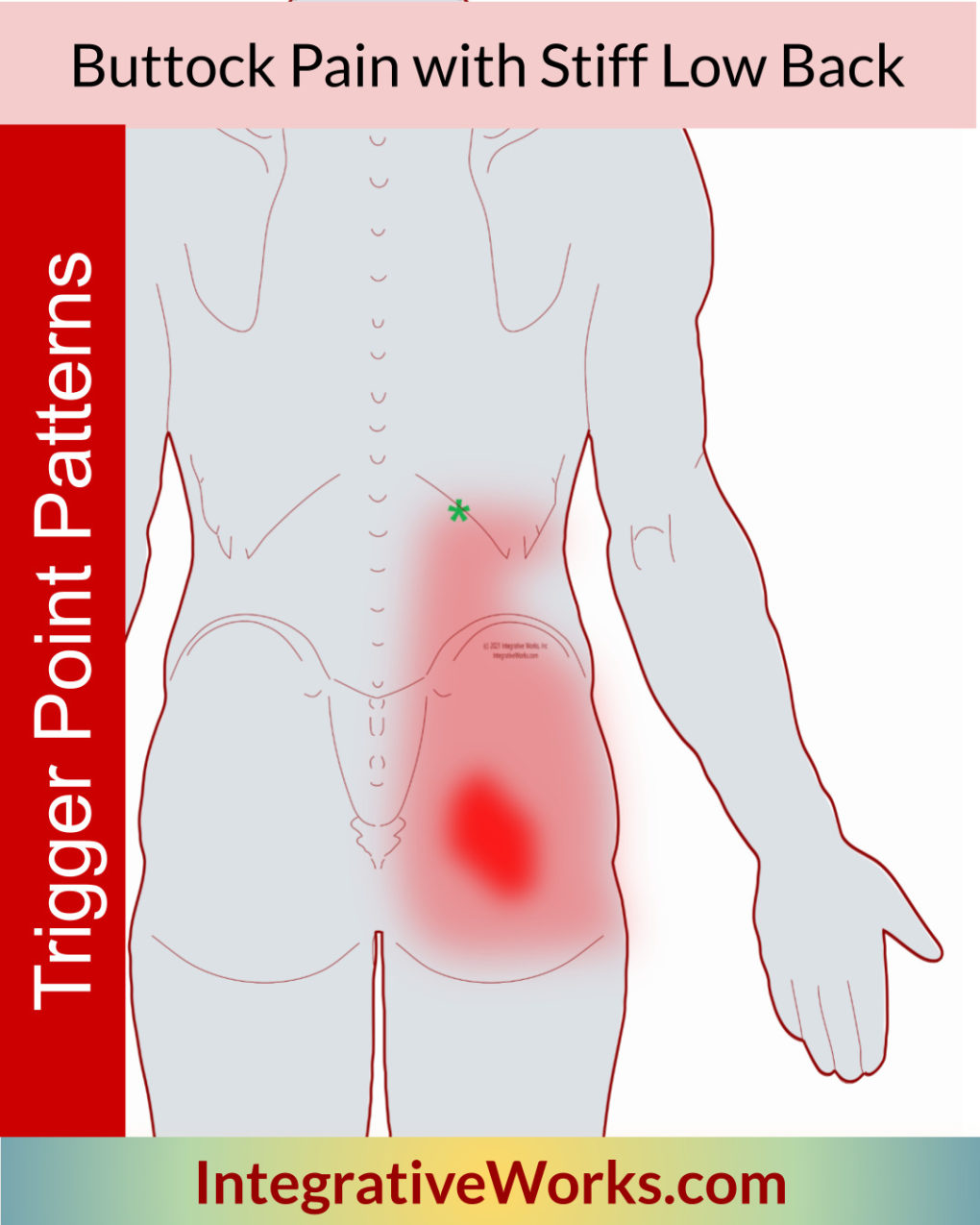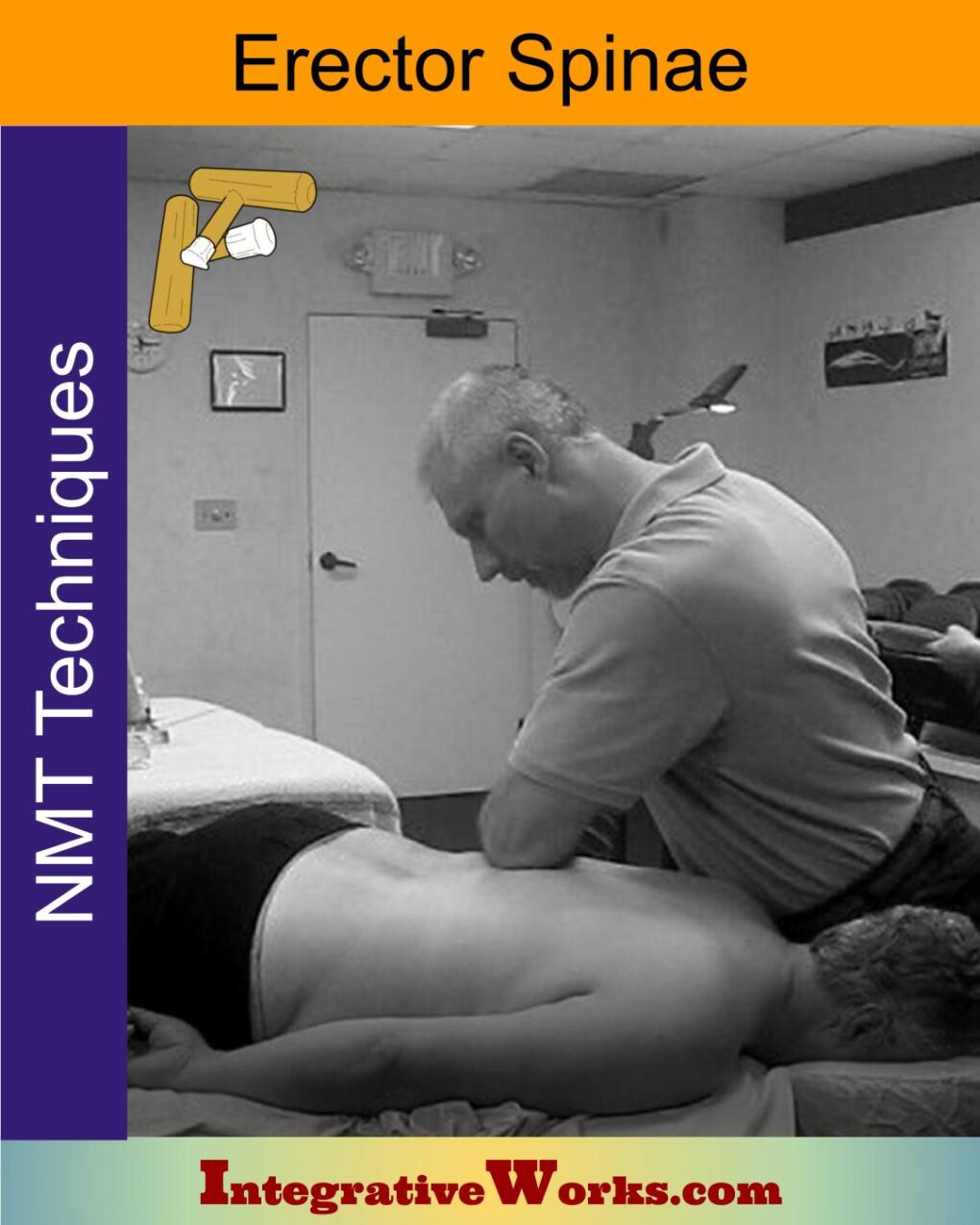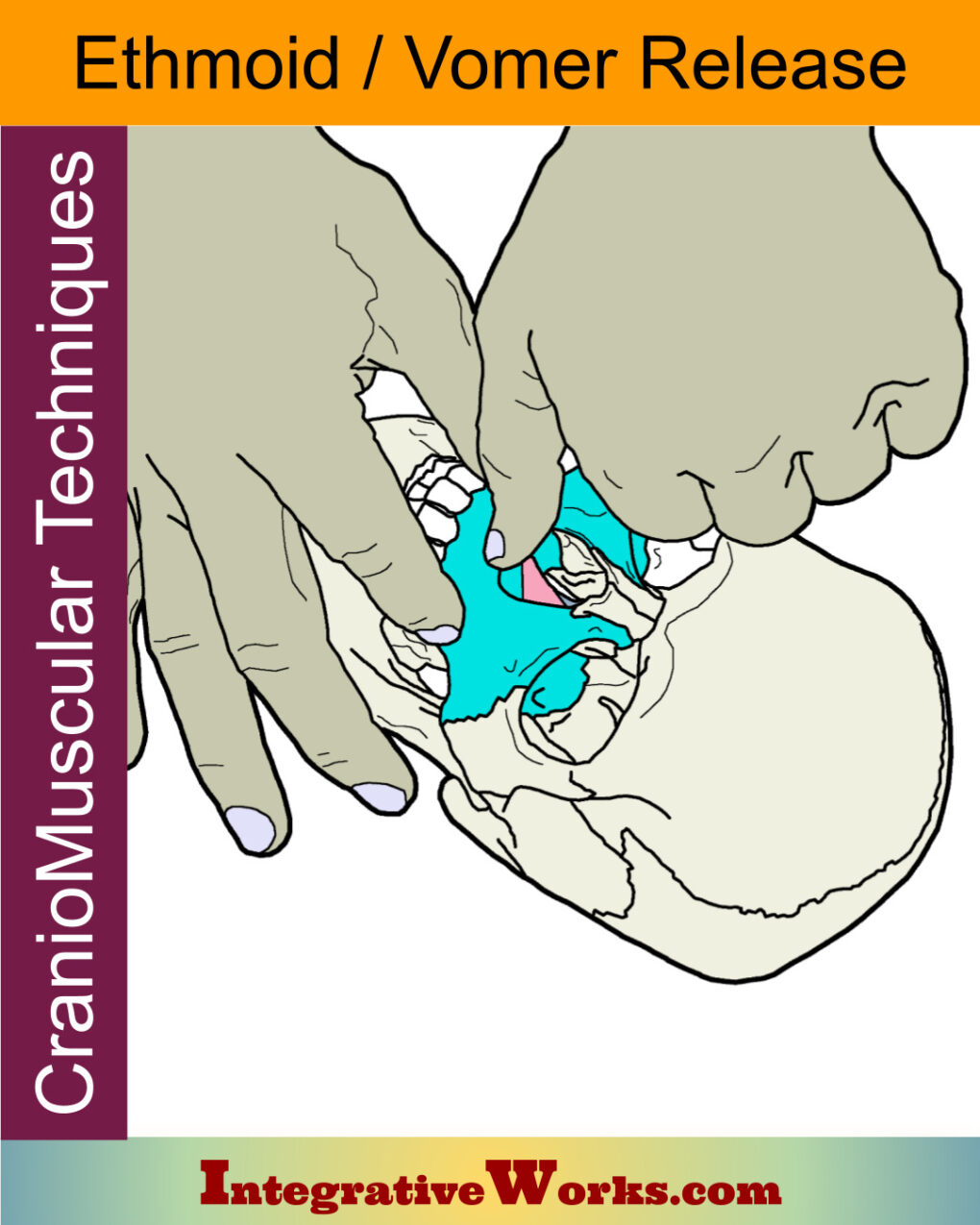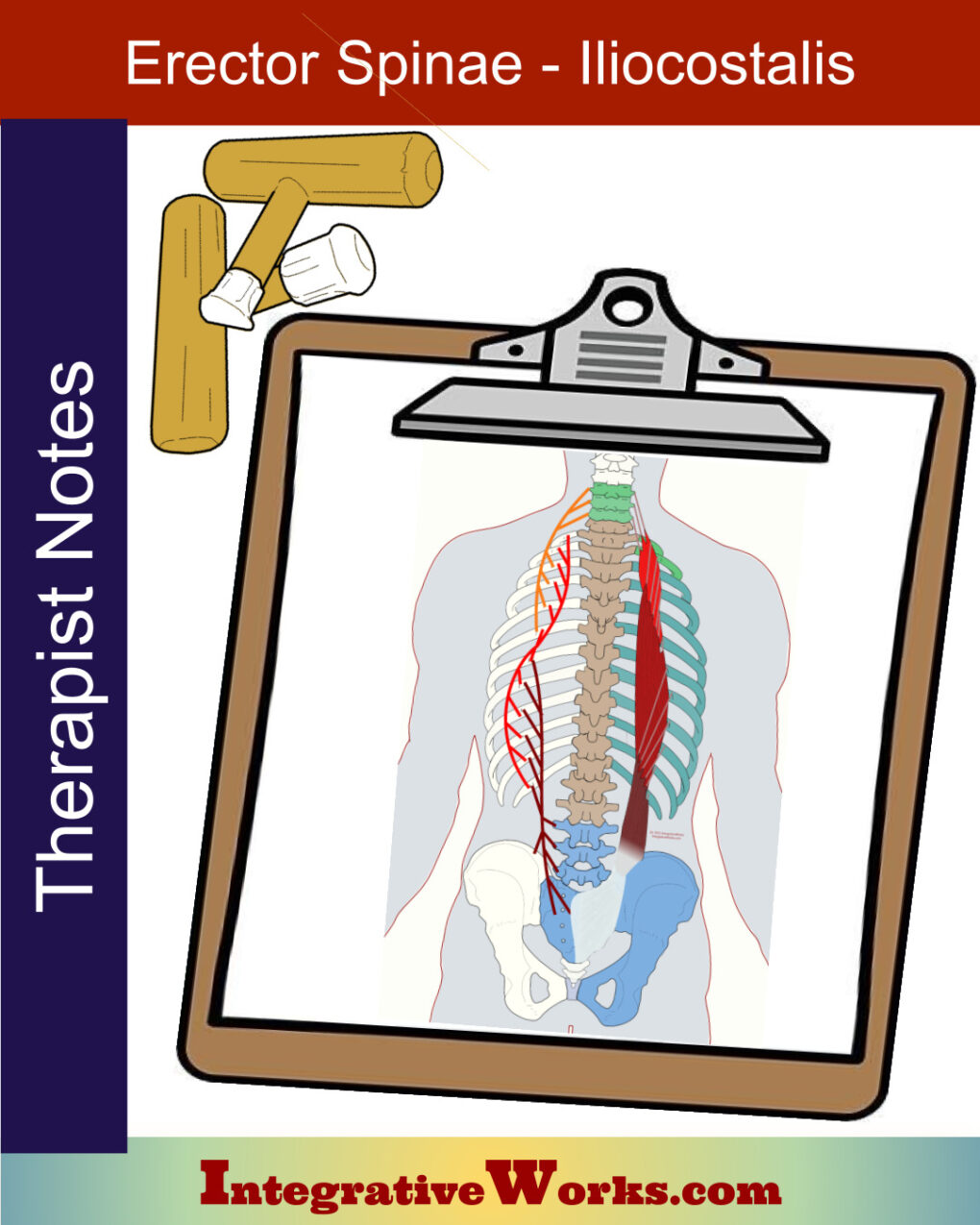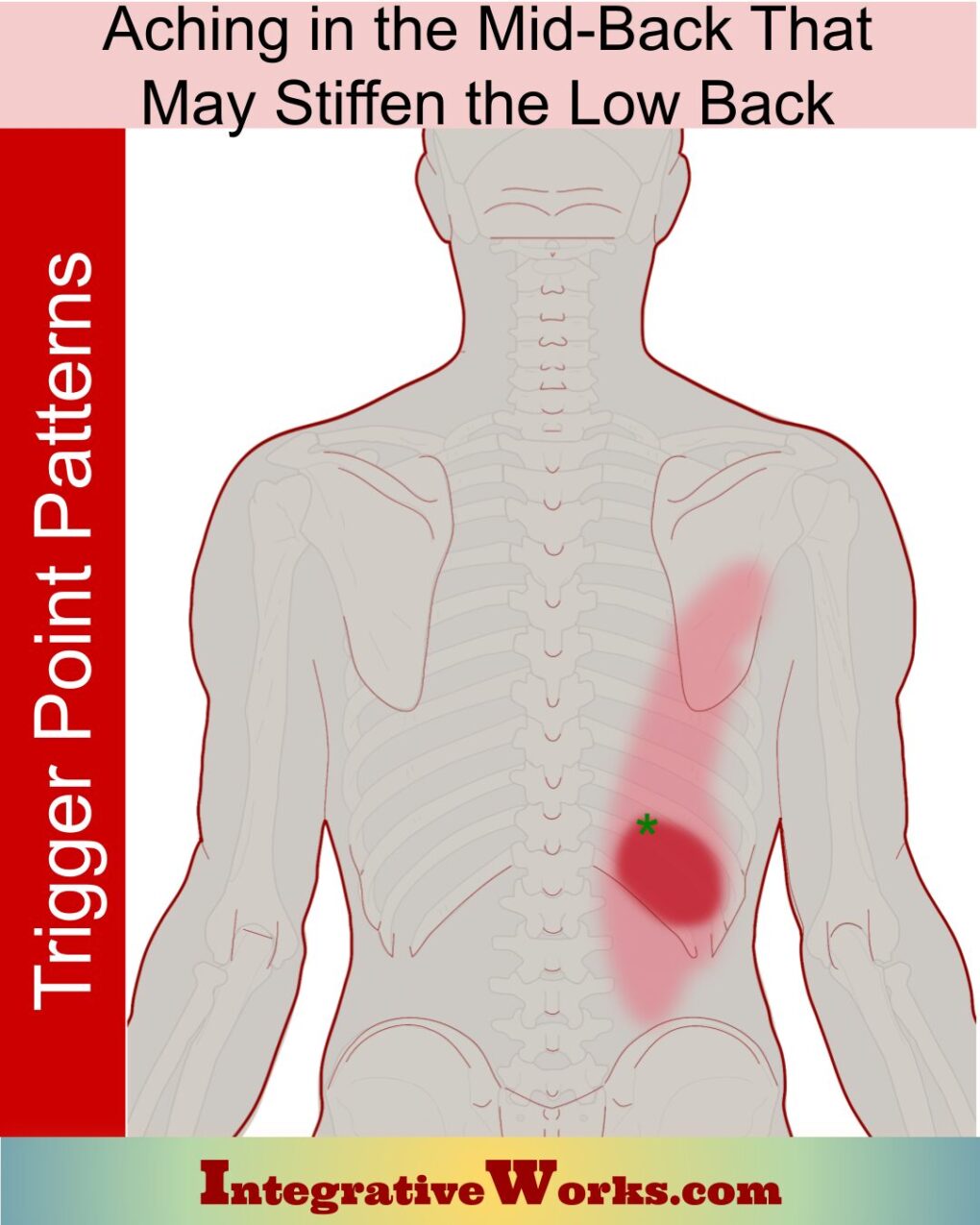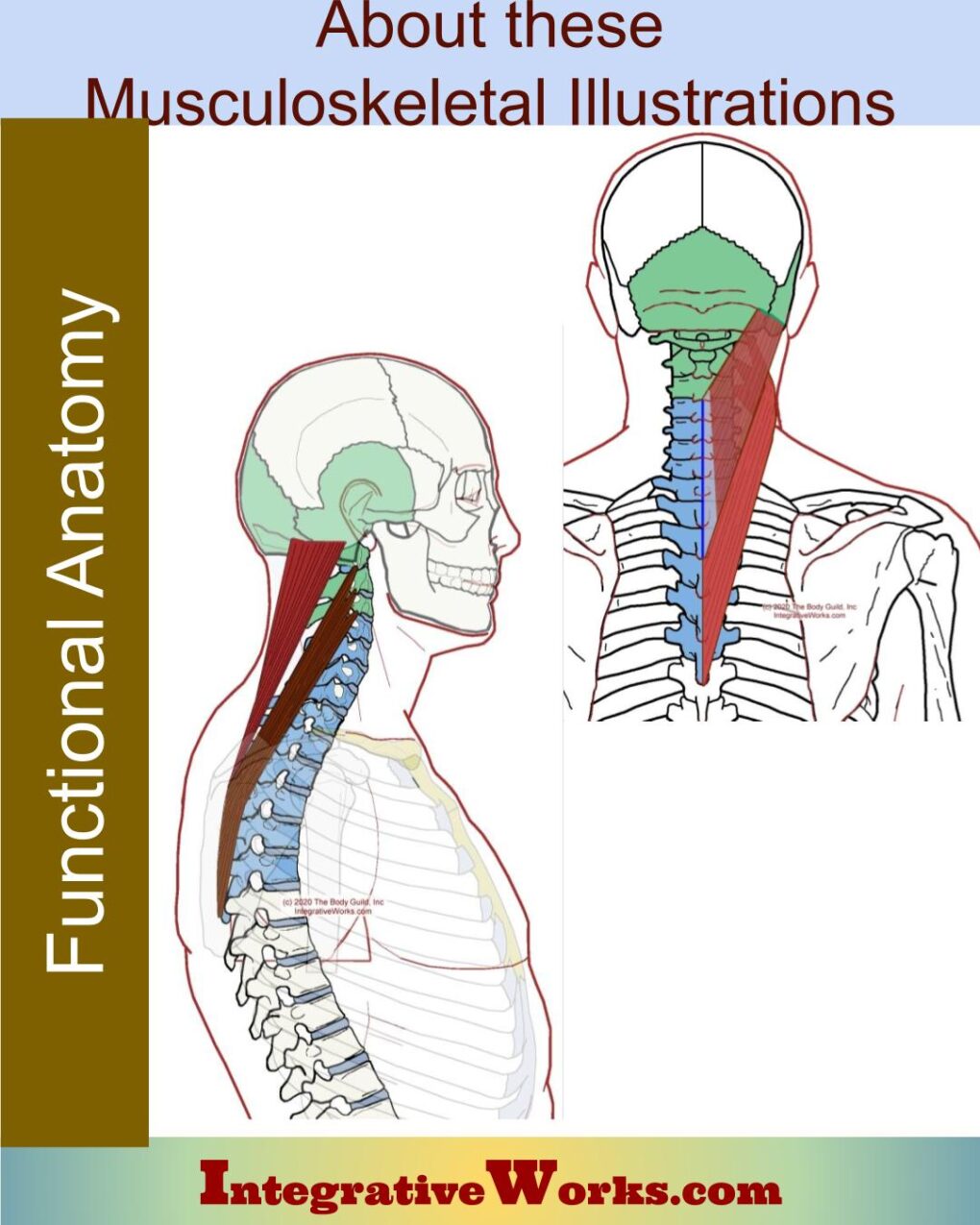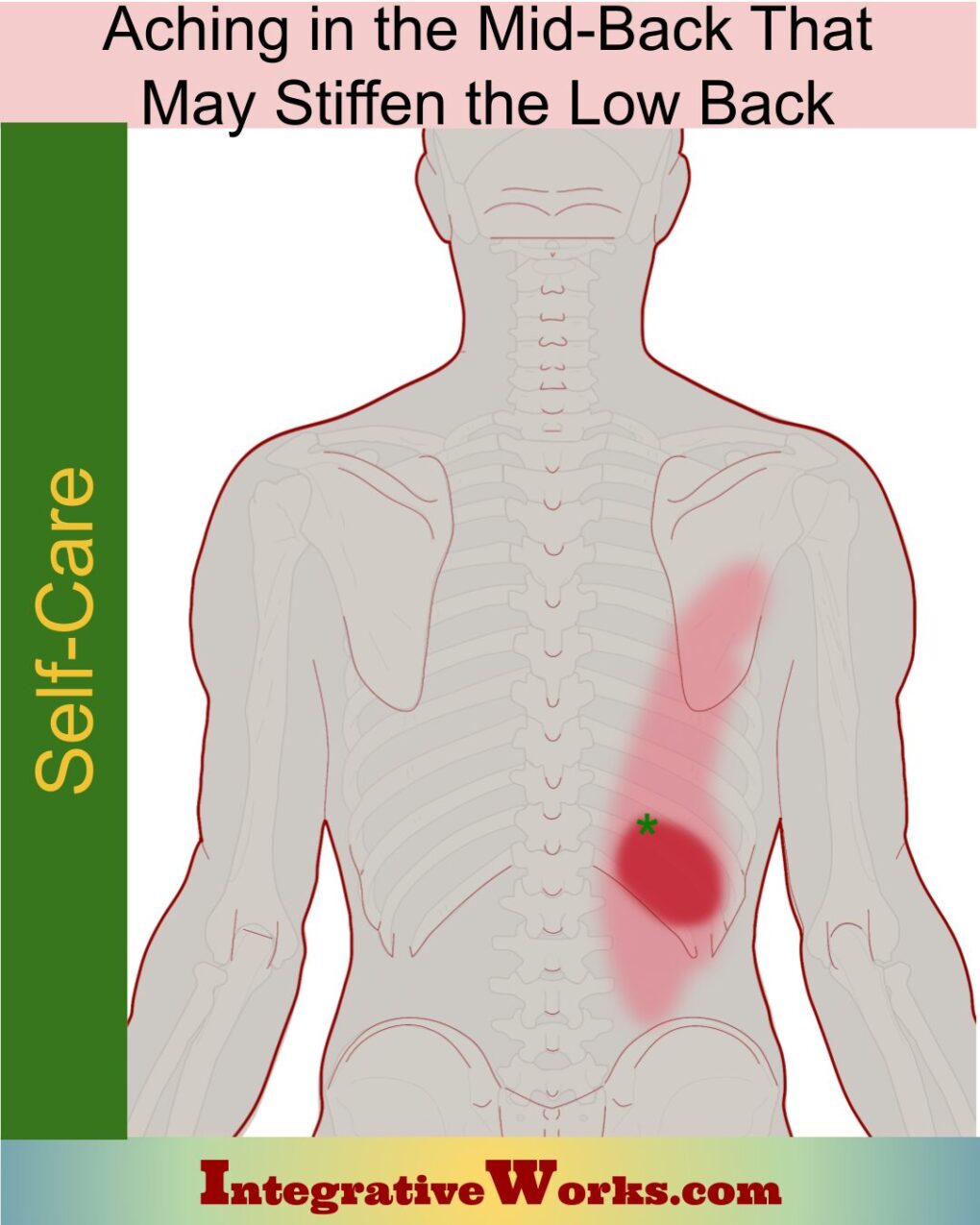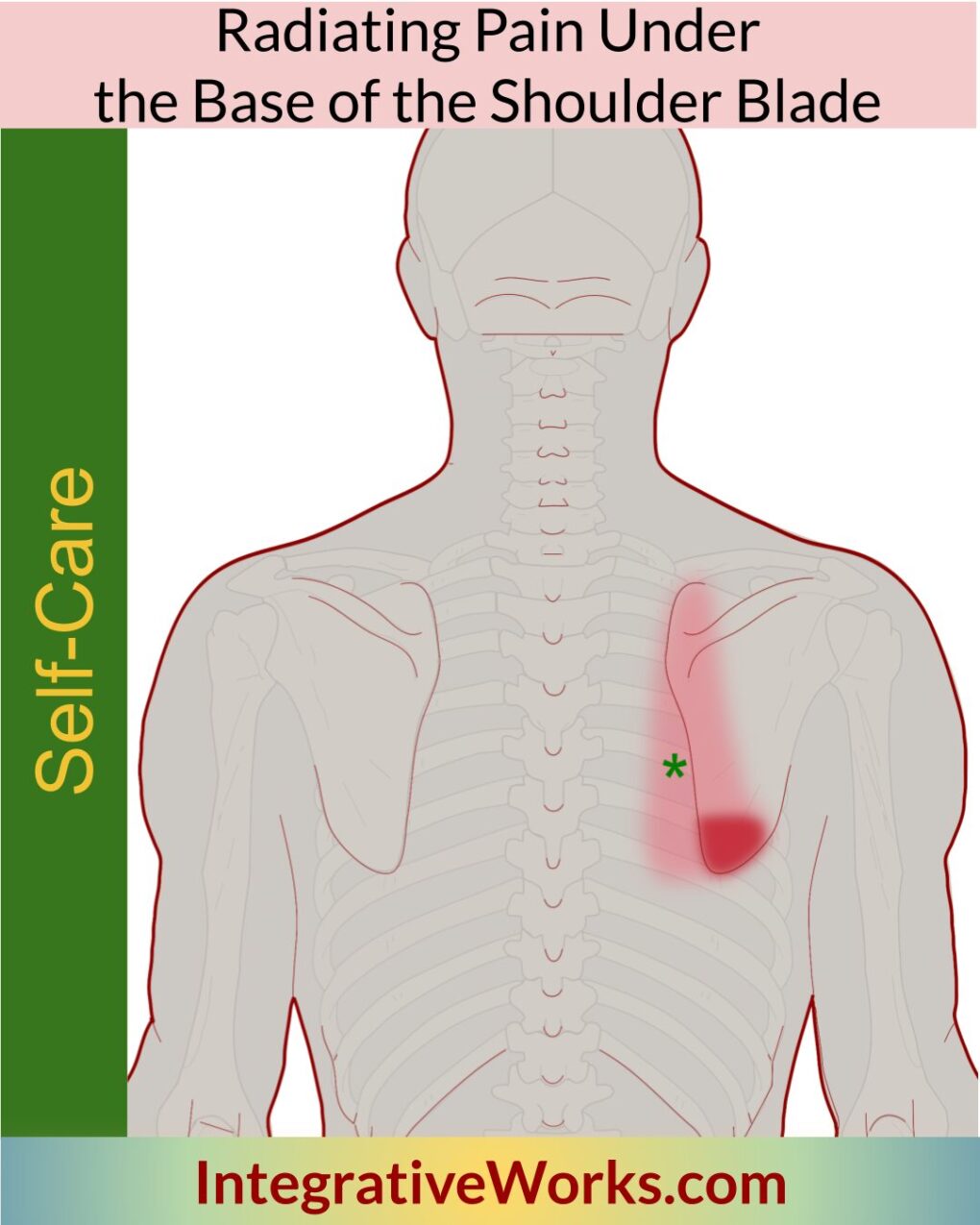Overview of anatomy

Iliocostalis is part of the erector spinae group, which also includes longissimus and spinalis. Iliocostalis, like the others, has 3 sections. The anatomy is often simplified. That’s understandable as it is both complex and variable.
All 9 sections of the erector spinae are gathered into a fascial compartment that extends along the spine.
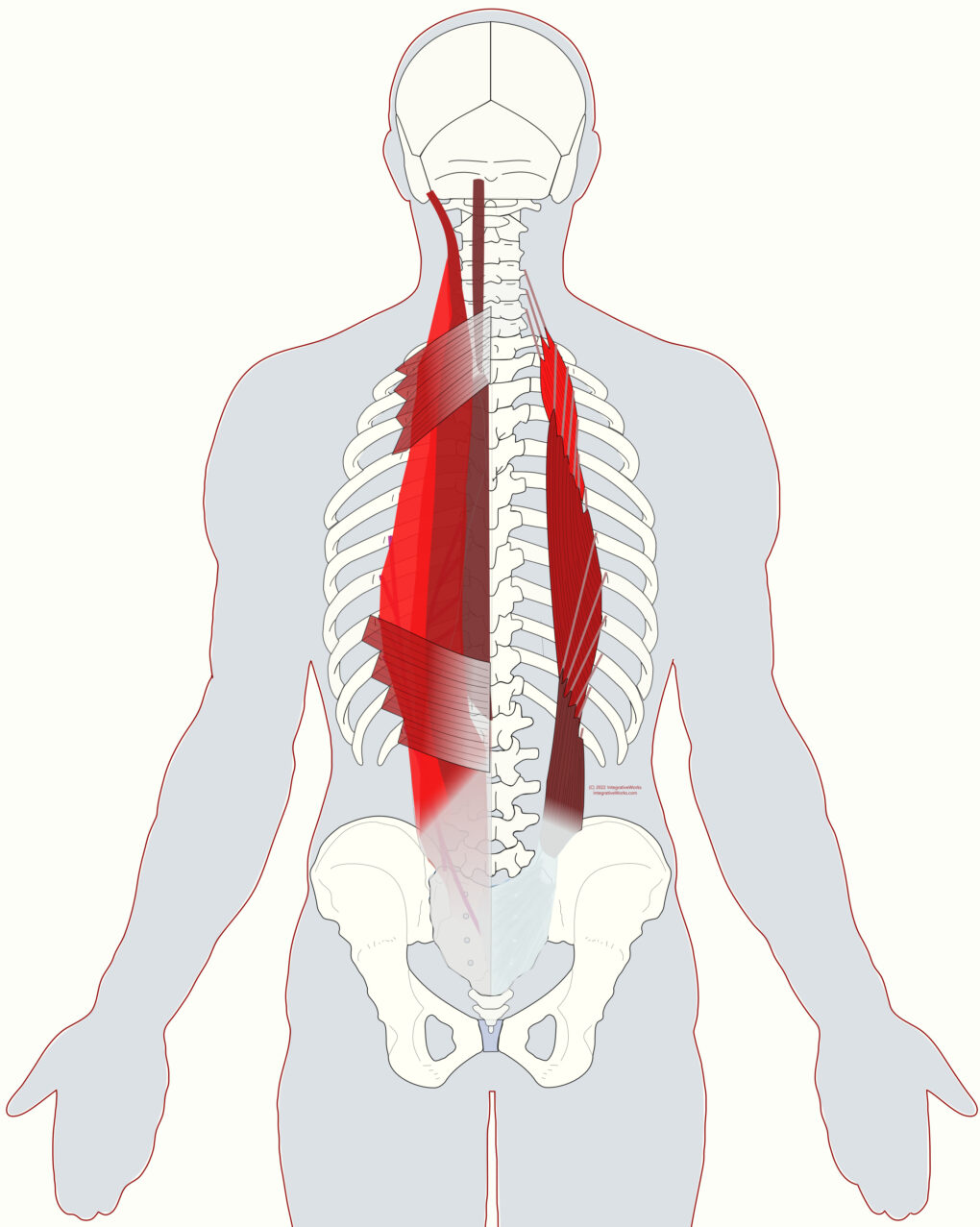
vs. a more detailed iliocostalis
Variations in Studies and Illustrating
Often, spinal erectors, including iliocostalis, are illustrated as bundles. I’ve created one of those classic looks on the left. I’ve included the serratus posterior muscles in the illustration, as they bundle the erectors together.
However, I’ve not seen the arrangement on the left on actual cadavers. I often find this kind of duplication in illustrations. It seems that more famous illustrators, especially Netter, set standards that are often not questioned. His illustration of the Iliotibial band is another example. I digress.
I have to admit that the research on illustrating this was frustrating and exhausting for several reasons. First, the majority of studies on the web are about livestock. Secondly, the studies are seldom clear in their description and images of the attachments. Thirdly, they don’t clearly separate the sections in the images. In fact, many of them have broad, sweeping sections that are misleading. At times, they use the same cadaver images in different studies with differences in attachments. This study finds discrepancies among texts as well.
A Different Perspective
I humbly present this format to provoke some thought. Long tendons that extend up to the lateral angle of the ribs are of the obvious qualities of the erectors in cadaver photos. They are also described in some of the studies. The bellies are rooted below. So, let’s focus on the attachments and the joints that they cross by using string diagrams.
Video with Iliocostalis
This video is about the illustrations on this site. It has an interesting section on iliocostalis.
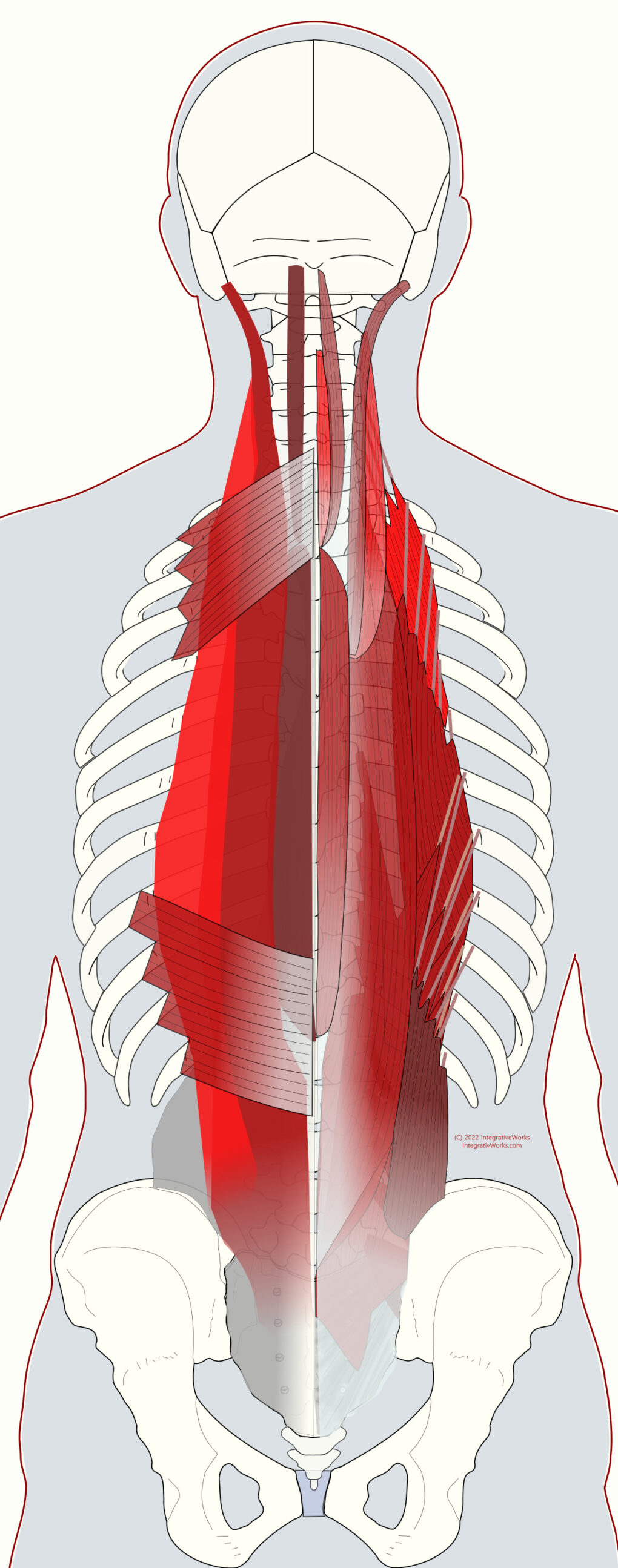
Erectors, The Big Picture
Erector spinae is regarded as three groupings of muscle: iliocostalis, longissimus, and spinalis. Commonly, each grouping then has three sections. Iliocostalis has lumborum, thoracis and cervicis. Longissimus has thoracis, colli (cervicis), and capitis. Spinalis also has thoracis, colli, and capitis.
On the Left
On the left, it shows a typical grouping of the erector spinae:
- Iliocostalis is bright red.
- Longissimus is darker red.
- Spinalis is dark brown.
- Serratus posterior superior, and inferior bundle the muscles together.
On the Right
Iliocostalis, longissimus, and spinalis are color-coded by their sections on the right.
- Lumborum sections are shown in dark brown.
- Thoracis sections are in dark red.
- Cervicis/Colli sections are in bright red.
- Capitis sections are in a lighter brown.
- The longissimus lumborum section is under a couple of layers and, therefore, not shown in this view.
The Illiocostalis Group
Iliocostalis has three sections extending from the pelvis to the mid-cervical vertebrae. Each section attaches to the upper six ribs, the lower six ribs, or both. They attach to the lateral angle on the ribs, which is that little corner on each rib along the edge of the shoulder blade.
This illustration and the ones that follow have a more realistic version of the muscle on the right and a string diagram on the left. These string diagrams are particularly revealing in the relationship between the sections.
Connecting Sections
It is notable that:
- The lumborum section connects the lower six ribs to the pelvis. This arrangement provides a stable base for the lower attachments of the thoracic section.
- The thoracis section connects the lower six ribs to the upper six ribs. Again, this stabilizes those ribs for the lower attachments of the cervicis.
- Then, the cervicis section extends from the upper ribs to the middle of the neck. Typically, it skips over the top ribs and the last cervical vertebra.
Iliocostalis, Ribs, and Breathing
Ribs are quite flexible, which is essential for breathing. The Erector spinae are very active when coughing or defecating. Also, the iliocostalis lumborum is very active at the end ranges of labored breathing. This muscle stabilizes the lateral, posterior ribs, especially when bending over or twisting.
Iliocostalis Cervicis Anatomy
Cervicis attaches to vertebrae C3-C6 and ribs R3-R6.
Illustrations and text vary greatly on this particular section of the erector spinae. Some texts refer to the upper attachment at C7, whereas most assert that this muscle skips C7. In addition, the same sort of discrepancy is true of the lower attachment. Most texts say that the lower attachment is along the lateral angle of the ribs from R3-R6. Some claim that it is the upper six ribs or only R4-R6.
Iliocostalis cervicis is one of several muscles extending from the upper thoracic region to the lower cervical vertebrae. Also, it is one of the many muscles that skip over C7. This is the typical configuration, but studies vary in
Iliocostalis Thoracis Anatomy
Thoracis originates on the lateral angle of the lower six ribs. Then, it inserts on the lateral angle of the upper six ribs. It is active primarily in the extension of the spine and lateral flexion of the spine.
Iliocostalis Lumborum Anatomy
Lumborum originates on the lower lumbar vertebrae, sacrum, and ilium through the thoracolumbar fascia. It inserts on the lateral angle of the lower six ribs.
This muscle extends and laterally flexes the lower spine. It is also quite active in labored breathing, coughing, and defecation. It is also involved in other motions that depress the lower ribs.
There seem to be more studies about this section than other sections. However, most of them seem to include attachments and function of the lower erectors with multifidi for treatment of low back pain.
Some studies discussed layers of the thoracolumbar fascia and how the erectors attach. This older, classic study examines sections of the musculature of the low back.
Anomalies, Etc.
The studies on this muscle show notable variances. This study looks at the differences in the direction of the fibers in women.
Posts related to Iliocostalis
Buttock Pain with Stiff Low Back
Erector Spinae – Neuromuscular Massage Protocol
Ethmoid / Vomer Distraction
Iliocostalis – Massage Therapy Notes
Mid back Pain with Stiff Low Back
Musculoskeletal Illustrations
Musculoskeletal Illustrations Video
Radiating Pain Under the Base of the Shoulder-Blade
Self-Care – Buttock Pain with Stiff Low-Back
Self-Care – Mid Back Pain Often with Stiff Low Back
Self-Care – Radiating Pain Under the Shoulder Blade
Support Integrative Works to
stay independent
and produce great content.
You can subscribe to our community on Patreon. You will get links to free content and access to exclusive content not seen on this site. In addition, we will be posting anatomy illustrations, treatment notes, and sections from our manuals not found on this site. Thank you so much for being so supportive.
Cranio Cradle Cup
This mug has classic, colorful illustrations of the craniosacral system and vault hold #3. It makes a great gift and conversation piece.
Tony Preston has a practice in Atlanta, Georgia, where he sees clients. He has written materials and instructed classes since the mid-90s. This includes anatomy, trigger points, cranial, and neuromuscular.
Question? Comment? Typo?
integrativeworks@gmail.com
Interested in a session with Tony?
Call 404-226-1363
Follow us on Instagram

*This site is undergoing significant changes. We are reformatting and expanding the posts to make them easier to read. The result will also be more accessible and include more patterns with better self-care. Meanwhile, there may be formatting, content presentation, and readability inconsistencies. Until we get older posts updated, please excuse our mess.

